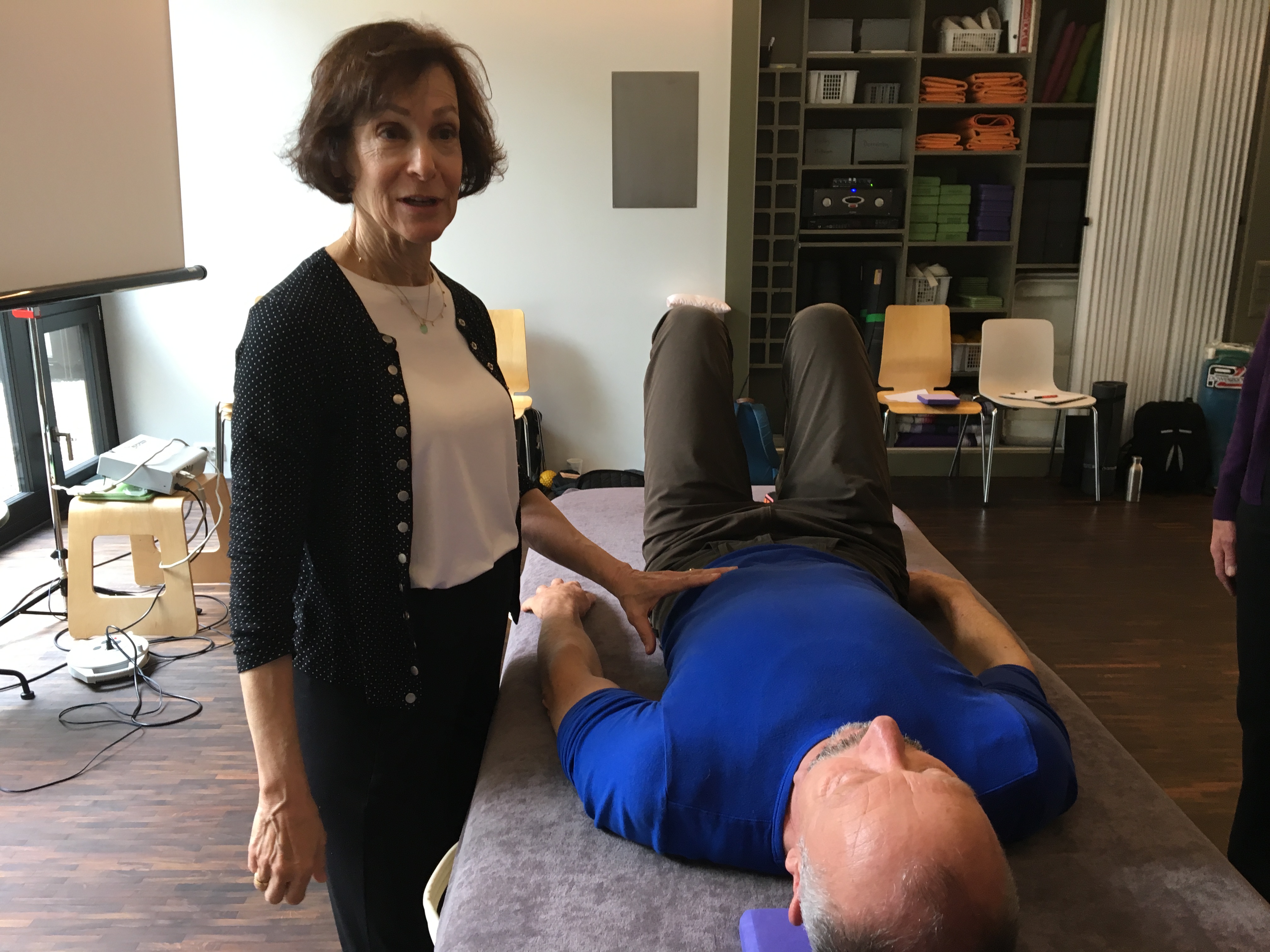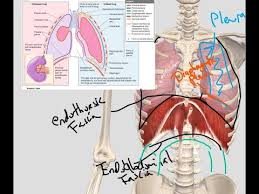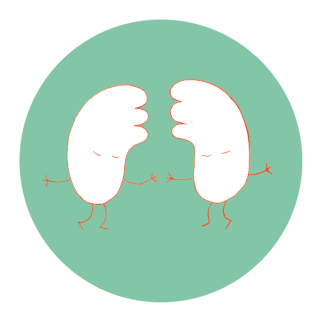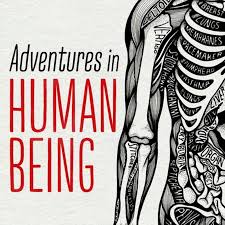Last month I was at a workshop with master teacher Jessica Wolf in Lucerne. In her „Art of Breathing“, Jessica Wolf combines the Alexander Technique with Carl Stough‘s Breathing Coordination. We explored breath through movement and touch and experienced the different shape shiftings of breathing, depending on thought and body position.
Read MoreWithout losing the breath
At the beginning of May I attended a talk at the Berlin Volksbühne by iconic feminist writer Hélène Cixous. It was fascinating to see how this tiny woman in her eighties filled the stage and held the undivided attention of the audience just by speaking, by the sheer energy of her thinking. Two quotes stayed with me in particular and one of them involves breathing:
“The past must no longer determine the future.”
“We inspire ourselves and expire without losing the breath.”
Diaphragm: Origin Points, Openings and Coverings
This is an excellent video by Meditay about the diaphragm‘s origin points, connections to muscles, ligaments and fascia and its openings for bloodvessels.
Breath Token May 2019
A breath token is a breathing exploration that I develop for friends & clients and send out as a gift.
The Body as Vessel
The more we can experience and understand the body as a vessel for breathing, the more the breath can expand and move within it. One of the most direct ways to experience the body as a vessel is by sensing the body walls through touching, stroking and tapping. A playful way of experiencing the body walls is to experiment with objects like blankets, for example. So, let‘s try that now, rolling up a blanket and placing it around the body.
The rustle of leaves in a light breeze
In his book Adventures in Human Being, physician and author Gavin Francis portrays different structures of the body and among them are the lungs, which he calls “the breath of life”.
“…Lungs are the least dense organs in the body, because they are composed almost entirely of air. The word „lung“ comes from a Germanic root lungen, which itself arises from another Indo-European word meaning „light“. Read More
Sad oxygen
In the fun animation This is oxygen by Christopher Hendryx, an oxygen molecule tries to make friends with atoms like iron and barium. Due to oxygen’s high reactivity and its dramatic effects on many atoms, this proves to be difficult…
https://www.youtube.com/watch?v=54f7y3A7ZyI
Microplastics are blowing in the wind
A study in the French Pyrenees has shown that microplastics don‘t only infiltrate freshwater and soil but also air. „Atmospheric transport is yet another way plastic pollution is being distributed around the planet, even to remote areas“ writes Andrea Thompson in her article Microplastics Are Blowing in the Wind in the Scientific American.
Read More
Her death is like a short breath-stop
“Her death is like a short breath-stop” is a line from Serbian poet Vasko Popa’s elegy/eulogy to his English translator Anne Pennington. In his poem he achieves a wonderful reversal of meaning by juxtaposing “last breath” with “enlarges” – something narrowing with something widening – and “a short breath-stop” with “lime trees” – something abruptly ending with something yielding and lasting (etymologically “Lime” comes from Old English and Germanic languages lind, linde “lenient, yielding”). The emphasis of the ceasing of Anne Pennington’s breath at the beginning and the end of the poem paradoxically ensures her enduring presence in his life and the lives of all that knew her.
Read MoreBreath Token April 2019
A breath token is a breathing exploration that I develop for friends & clients and send out as a gift.
Making space in the loins
The loins are a key area as they are the transition between the pelvis and the legs. This area relates to breathing through the poses muscle which runs diagonally from the top of the dorsal part of the diaphragm to the top of the thigh bone. The diaphragm and the psoas muscle are thus connected. We can sense the psoas muscle clearly when we stand on a step or a Yoga block and let one leg hang, pull it up and let it hang again. Or we can try out walking with two different focuses: 1. the pelvis and the legs as a unit and 2. the pelvis and the legs as two separate units. What happens in the body and in breathing during and after walking in one way and then the other?
Usually when the focus is on the pelvis and the legs as a unit, the movement of the legs becomes narrower and the body more compact. The breathing is restricted. When the focus is on the pelvis and the legs as separate units, the torso lengthens, the loins become more open, expanded even, the psoas releases and the legs can move more freely. The freedom of the legs transfers itself on the breath movement. Any position or movement that releases the psoas and makes space in the loins, also helps the breath movement.
“The truth is most people just need to learn how to breathe”
I found this video about Dr Karel Lewit, a Jewish-Czech physician who specialized in neurology and became a world authority in myoskeletal medicine, after hearing about him from the myoskeletal therapist Erik Dalton. The video is beautifully shot by Ales Urbanczik, entitled: Touching Feeling Understanding. Dr Lewit practiced what he called a “functional, relational approach” which, of course, includes a client’s way of breathing. Read More








